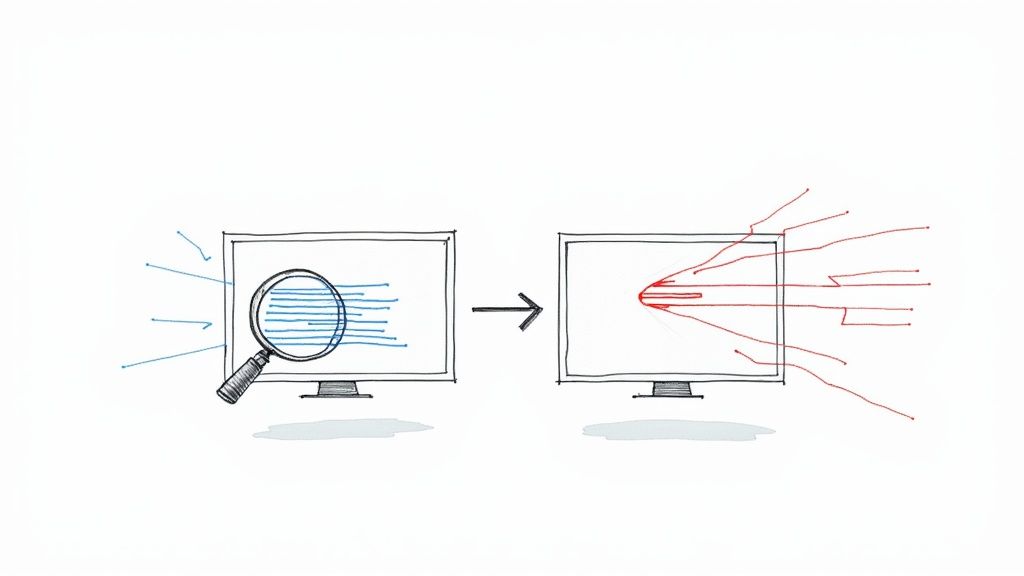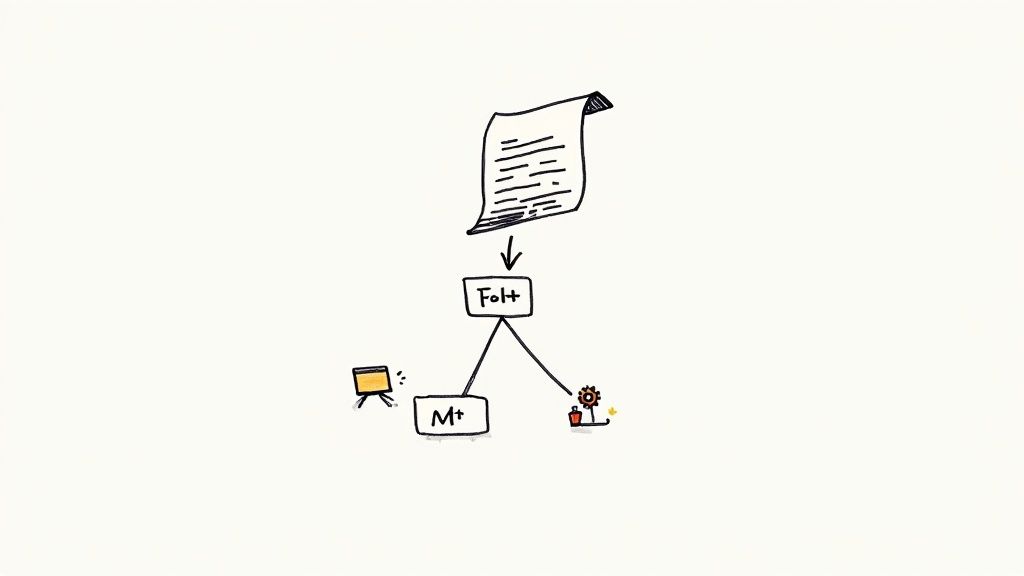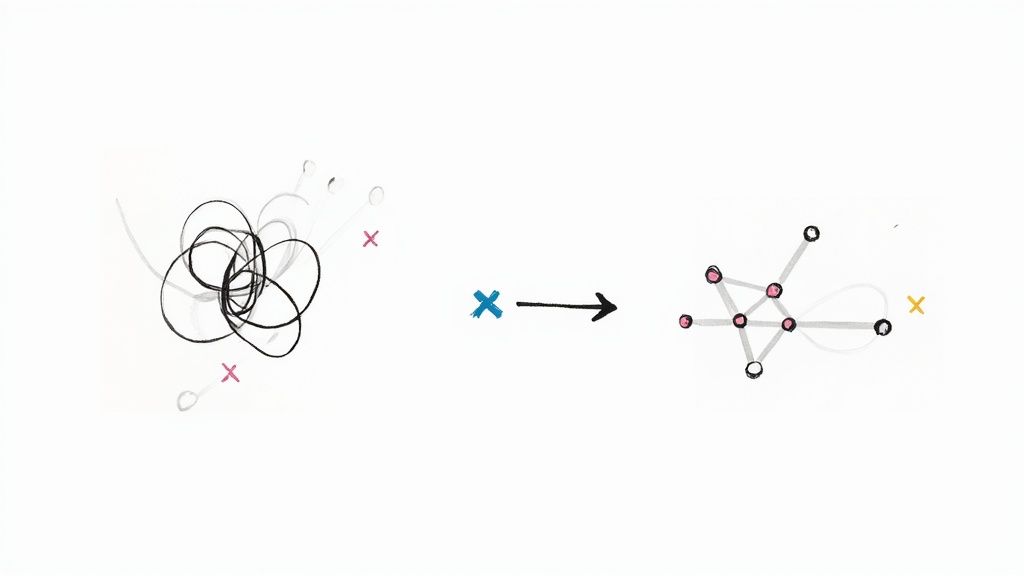Master Python Fixtures for Better Test Automation

Demystifying Python Fixtures: The Secret to Testing Success
Python fixtures are essential for writing efficient and reliable tests. They provide a structured way to manage the setup and teardown phases, ensuring consistency and reducing code duplication. This leads to more maintainable and easier-to-debug tests. Think of fixtures like preparing a stage for a performance: before each act (test), you need specific props and scenery (test data and environment). Fixtures automate this preparation, saving you valuable time and effort.
Why Use Python Fixtures?
Python fixtures offer several key advantages that boost the quality and efficiency of your tests. They eliminate the need to write repetitive setup and teardown code within each test function. This not only streamlines your test suite but also prevents inconsistencies that could lead to unreliable results.
Fixtures also enhance test isolation. By providing a fresh environment for each test, they prevent unintended side effects between tests. For example, if one test modifies a database record, fixtures ensure this change doesn't impact subsequent tests. This isolation is critical for accurate and reliable test results.
Furthermore, fixtures offer a centralized way to manage dependencies between tests, simplifying complex test scenarios. This structured approach promotes best practices in software testing and improves team collaboration by clarifying how tests are constructed and managed. As software development increasingly relies on Python, effective testing tools like fixtures become indispensable. In fact, Python accounts for roughly 28% of global programming language usage, highlighting the demand for robust testing solutions.
Fixture Scope and Usage
Python fixtures offer flexible scope options, determining how often a fixture is executed.
- Function: Runs before each test function.
- Class: Runs once per class.
- Module: Runs once per module.
- Session: Runs once per test session.
Selecting the right scope can significantly influence test performance. For frequently used resources, a broader scope (like module or session) can minimize overhead. However, consider potential side effects and ensure tests remain isolated.
The data chart below illustrates the trade-offs between fixture scopes in terms of performance and resource consumption.
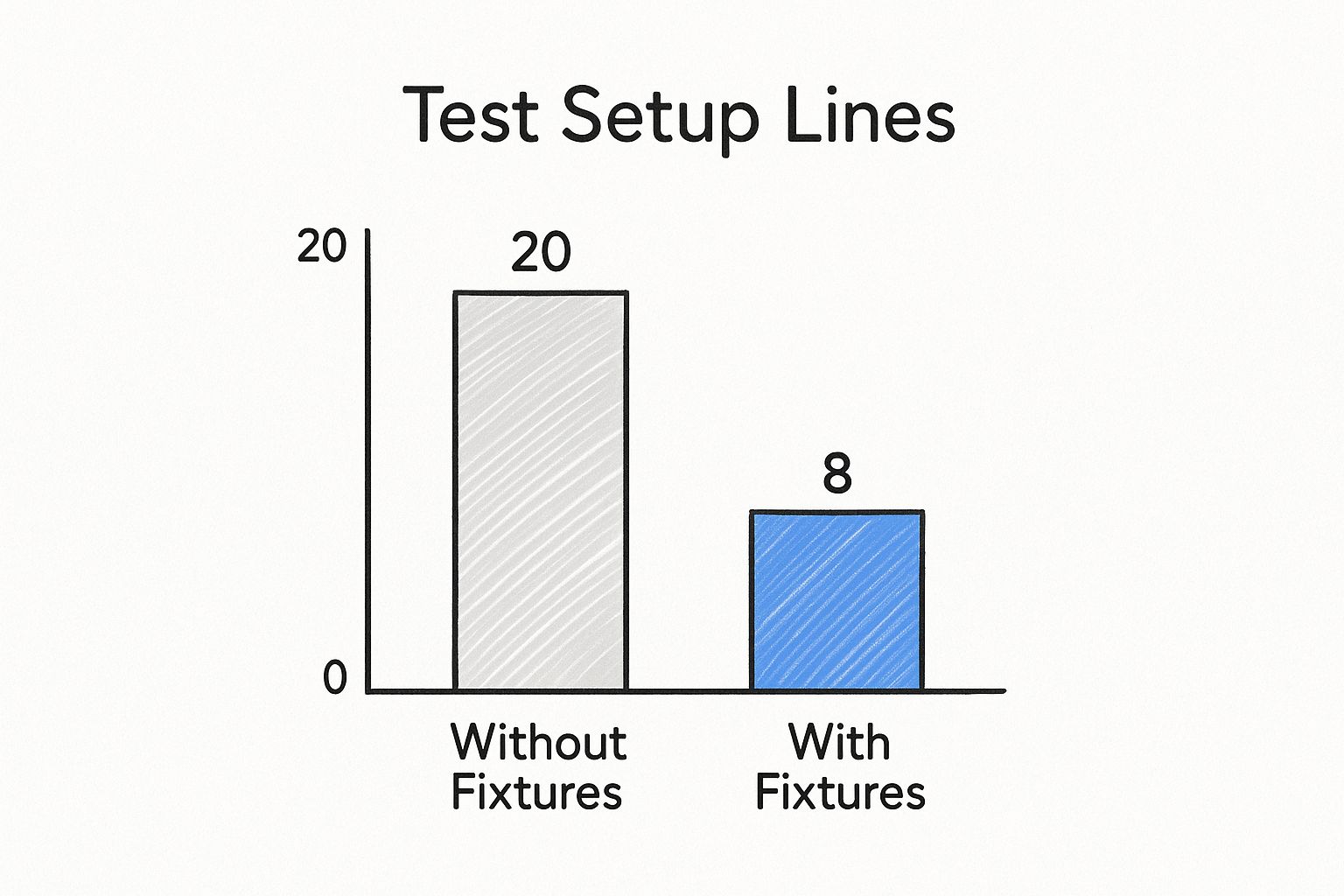
The bar chart reveals that session-scoped fixtures offer the best performance (lowest execution time) but consume the most resources. Function-scoped fixtures have higher execution times due to repeated setup and teardown but utilize minimal resources per test. This visualization helps developers choose the appropriate scope based on their testing needs and resource limitations. Picking the correct scope balances test speed and resource utilization.
Python Testing Frameworks Comparison
To understand the differences in fixture implementation across various frameworks, let's examine the following comparison table.
| Framework | Fixture Implementation | Scope Options | Key Features | Best For |
|---|---|---|---|---|
| Pytest | @pytest.fixture decorator |
function, class, module, session | Powerful and flexible, widely adopted | Most projects, especially complex ones |
| Unittest | setUp and tearDown methods |
class, module | Built-in, simpler implementation | Smaller projects, less complex setups |
| Nose2 | Plugins and extensions | varies | Extensible, supports plugins | Projects requiring specific integrations |
This table highlights key differences in fixture implementation across popular Python testing frameworks. Pytest's @pytest.fixture offers comprehensive functionality and flexibility, while Unittest provides a more straightforward built-in mechanism. Understanding these distinctions helps you select the best framework for your testing needs. With these tools, you can write more effective tests and ensure the quality and reliability of your Python code.
Mastering PyTest Fixtures: From Basics To Brilliance
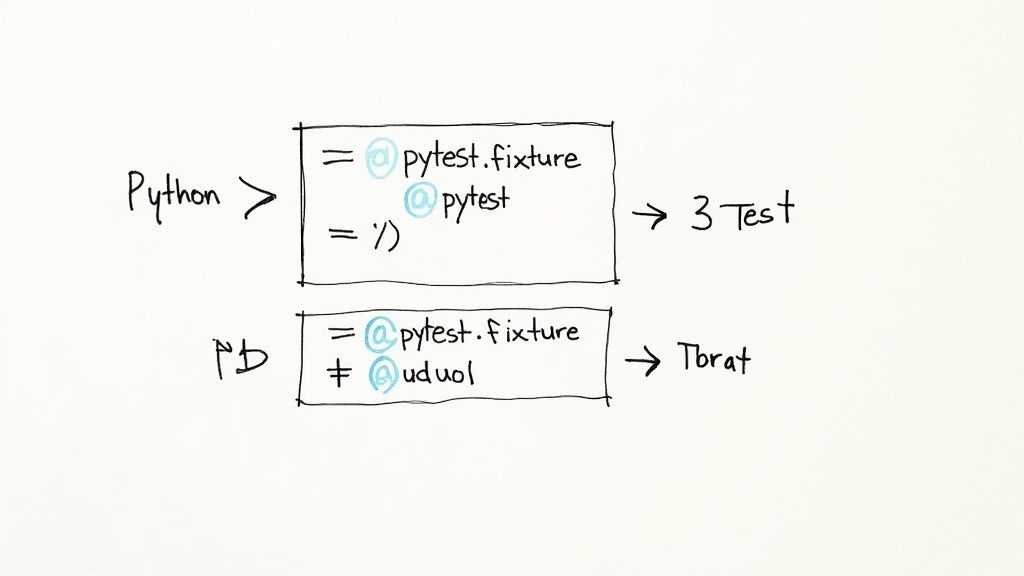
This section explores the practical use of Python fixtures within the PyTest framework. We'll examine how to use them effectively in real-world testing scenarios. Through clear examples, you'll learn how to progress from basic fixture usage to more advanced techniques.
The @pytest.fixture Decorator
At the heart of Python fixtures in PyTest lies the @pytest.fixture decorator. This decorator transforms an ordinary Python function into a reusable fixture. It provides a straightforward yet robust way to set up the necessary preconditions for your tests.
Imagine needing a database connection for multiple tests. Instead of repeatedly establishing this connection within each test function, you can create a fixture.
import pytest
@pytest.fixture def db_connection(): # Code to establish database connection connection = establish_connection() return connection
def test_query_data(db_connection): # Use the db_connection fixture data = db_connection.query("SELECT * FROM my_table") # Assertions to validate the data assert len(data) > 0
def test_insert_data(db_connection): # Reuse the db_connection fixture db_connection.insert("INSERT INTO my_table (value) VALUES ('test')") # Assertions to verify insertion assert db_connection.query("SELECT value FROM my_table WHERE value = 'test'")
This example shows how the db_connection fixture supplies the necessary connection for both test functions. This approach eliminates redundancy and maintains consistency across your tests, which becomes increasingly valuable as your test suite grows.
Fixture Scopes: Optimizing For Performance
Understanding fixture scopes is essential for efficient testing. PyTest offers four scopes: function, class, module, and session. The scope you choose significantly impacts test performance.
- Function scope: The fixture runs before each test function. This ensures isolation but might be less efficient for resource-intensive setups.
- Class scope: The fixture runs once per class, suitable for setting up resources shared within a test class.
- Module scope: The fixture executes once per module, improving performance when multiple test functions within a module share expensive resources.
- Session scope: The fixture runs only once per test session, ideal for resources needed throughout the entire test suite.
For example, if you have a complex test environment requiring a one-time setup, using the session scope avoids redundant setup and speeds up your tests. However, remember to ensure your tests remain isolated even with broader scopes.
conftest.py: Organizing Your Fixtures
Organizing fixtures is crucial as your project expands. PyTest offers a dedicated file, conftest.py, for this purpose. Putting your fixtures in conftest.py makes them automatically available across your test suite, removing the need for explicit imports. This allows you to manage fixture dependencies and use yield statements for cleanup. This organized approach keeps your tests maintainable as they become more complex. conftest.py promotes a cleaner testing structure, reducing the risk of errors and enabling efficient fixture sharing across different test modules for better code reuse and consistency.
Advanced Fixture Patterns That Seasoned Developers Use
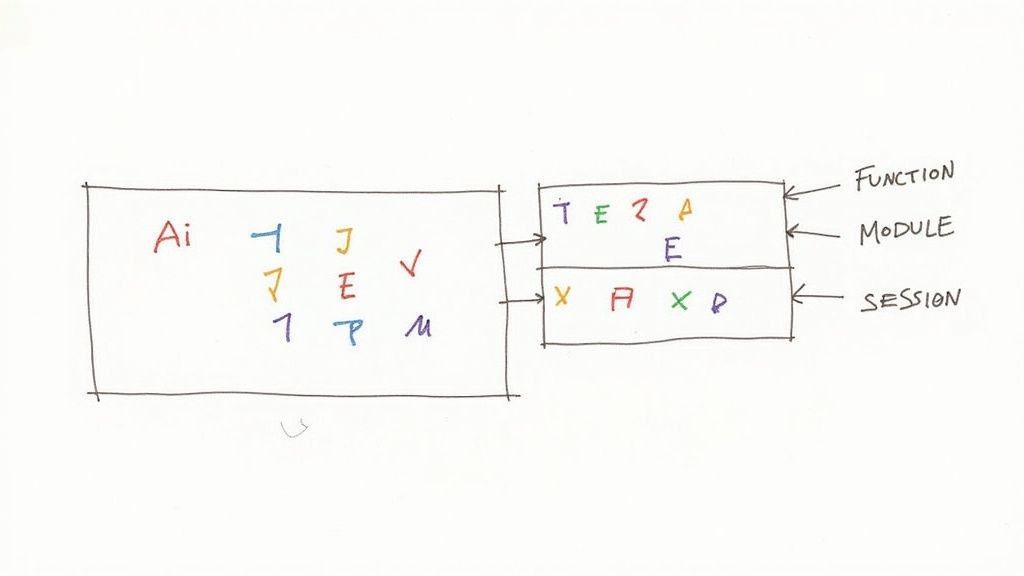
Building upon the basics of Python fixtures, let's explore some sophisticated techniques employed by experienced developers. These patterns can significantly enhance your testing strategy, especially as your project expands.
Factory Fixtures: Dynamic Test Data
Creating dynamic test data is a recurring hurdle in software testing. Factory fixtures offer a solution by creating functions that generate unique data sets for each test.
This is incredibly helpful when you need a diverse range of test cases without the tedious task of manually defining each one.
Imagine testing a user authentication system. A factory fixture could generate users with different roles and permissions, ensuring comprehensive test coverage across various scenarios.
Parametrized Fixtures: Data-Driven Testing
Parametrized fixtures are the cornerstone of data-driven testing. They allow you to run the same test logic with different input values, which is invaluable when testing functions with multiple valid inputs.
By centralizing input variations, parametrized fixtures streamline your test code and minimize redundant test functions.
When exploring advanced fixture patterns, consider efficient strategies for automating API tests. This approach boosts test coverage without adding unnecessary code complexity.
Composite Fixtures: Building Sophisticated Environments
Testing the interactions between different components often demands complex setups. Composite fixtures excel in this area by combining multiple fixtures to create intricate test environments.
Think of it like assembling a complex machine from individual parts. Each fixture contributes a specific component, and the composite fixture integrates them into a functioning whole.
This pattern simplifies the management of complex dependencies, resulting in more understandable and maintainable tests. It enables you to simulate complex scenarios like database interactions, API calls, and interactions with external services within a controlled environment. The projected growth of the industrial software market, from $146 billion in 2023 to $355 billion by 2030, highlights the increasing demand for automation and testing efficiency. More detailed statistics are available here.
Optimizing and Debugging Fixtures
As your test suite expands, optimizing fixture performance becomes paramount. Strategies like caching expensive operations within fixtures can dramatically reduce test execution time.
Equally important are effective debugging techniques. PyTest’s built-in debugging tools, coupled with good logging practices within fixtures, enable efficient identification and resolution of issues.
Clear documentation of fixtures is also essential for team collaboration, particularly in larger projects. Comprehensive documentation enhances code maintainability and ensures everyone understands how fixtures are used and their dependencies.
Python Fixtures for Data Science: Testing Complex Models
Data science testing comes with its own set of difficulties. Traditional testing methods sometimes struggle with the intricacies of data pipelines, validating models, and ensuring results are reproducible. However, Python fixtures are transforming how data science teams tackle these obstacles.
Handling Large Datasets and Model State
A major advantage of fixtures lies in their ability to efficiently manage large datasets for testing purposes. Imagine training a machine learning model. To guarantee dependable comparisons, you'll need a consistent dataset for each test run. Fixtures allow you to load and prepare this data just once, then provide it to each test function, saving valuable processing time and resources.
Fixtures can also manage your model's state. This ensures a consistent starting point for each test, preventing unintended consequences between them. This is especially crucial for complex models with an internal state or dependencies on external resources.
Simulating Diverse Data Conditions
Fixtures also excel at simulating various data conditions. Testing a model's robustness means evaluating its performance on a wide range of inputs, including edge cases and potentially problematic data.
Fixtures can generate synthetic datasets tailored to specific testing scenarios. For example, you might create a fixture that provides data with missing values or outliers to see how your model performs in such situations. This facilitates targeted testing and provides a deeper understanding of your model's limitations, creating a controlled and repeatable testing environment.
Python's prevalence in data science, especially with tools like Pandas and TensorFlow, underscores the importance of reliable testing procedures. You can explore this topic further here.
Practical Approaches for Fixture-Based Testing
How can you implement fixture-based testing? Consider these applications:
- Data Transformations: Fixtures can pre-process data, ensuring uniform input for various transformation steps.
- Training Processes: They can manage model training configurations and datasets, making it easier to test various training scenarios.
- Prediction Accuracy: Fixtures can provide controlled test datasets for assessing and comparing the accuracy of your model's predictions.
By leveraging fixtures for these common tasks, you can identify problems earlier, validate results more confidently, and ultimately build more reliable machine learning systems. This leads to a faster development cycle, more accurate results, and increased confidence in your data-driven choices.
Avoiding the Python Fixture Traps That Slow Teams Down
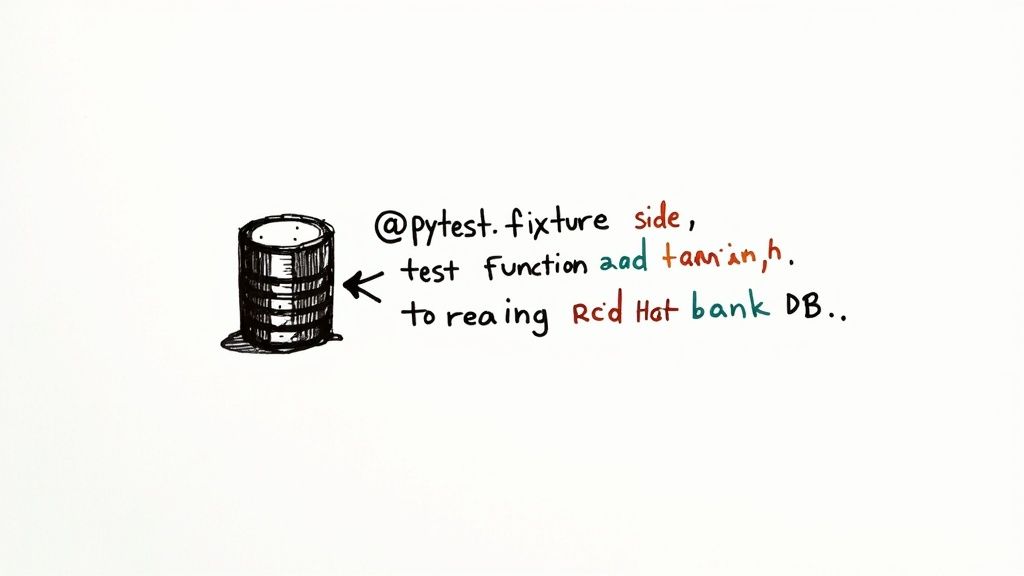
Even experienced teams can stumble upon Python fixture issues that impact the reliability of their tests. This section explores some common pitfalls and offers solutions for building more robust tests. Through practical examples and clear explanations, we'll address challenges that can lead to frustration and slow down development.
Scope Conflicts: Mysterious Test Failures
One common pitfall is scope conflicts. Imagine needing a specific database state for a test, but a fixture with a broader scope (like module or session level) alters that state unexpectedly. This can lead to unpredictable test failures, making it seem like tests randomly pass or fail without a clear reason.
To address this, carefully consider the scope of each fixture. Use the narrowest possible scope (e.g., function scope) unless a broader scope is absolutely necessary for performance reasons. This helps reduce the chances of unintended interactions between your tests and fixtures. Debugging these conflicts can be a significant time sink, hindering your development progress.
Dependency Cycles: Blocking Test Execution
Dependency cycles between fixtures can cause major headaches, sometimes even blocking test execution entirely. This occurs when fixture A depends on fixture B, but fixture B also depends on fixture A. This creates a circular dependency, preventing PyTest from figuring out the correct fixture order.
To prevent these issues, carefully plan your fixture dependencies. Visualizing the relationships between fixtures can help identify and break these cycles. This proactive approach saves you from the frustration of tracing dependencies and untangling complex chains.
Performance Bottlenecks: Slow Test Suites
While fixtures can improve performance, poorly designed fixtures can introduce performance bottlenecks. This is especially true when dealing with resource-intensive setups. For example, if a session-scoped fixture performs a long database operation that's not needed for every test, it can slow down the entire test suite.
Optimize fixture performance by avoiding unnecessary actions. If a time-consuming operation is only required by some tests, refactor the fixture to a narrower scope or create a separate, more specialized fixture. This keeps your test suite fast and agile.
Maintaining Isolation and Handling Resources
Maintaining fixture isolation is critical for reliable tests. If one test alters a fixture, it shouldn't impact the results of other tests that use the same fixture.
Implementing good cleanup mechanisms, such as using the yield keyword in fixtures to release resources after each test, is essential. This ensures a clean environment for every test, leading to more reliable results. Furthermore, handling external resources, like databases or network connections, requires careful management. Fixtures should acquire these resources before a test and release them afterward. This practice prevents resource leaks and ensures a consistent testing environment. For better debugging and error identification, learning how to write good bug reports is essential. This improves fixture maintenance by clearly documenting errors.
The following table summarizes common fixture pitfalls and their solutions:
Python Fixture Pitfalls and Solutions
| Pitfall | Symptoms | Root Cause | Solution | Preventive Measures |
|---|---|---|---|---|
| Scope Conflicts | Unexpected test failures; intermittent test results | Fixtures with overly broad scopes interacting unintentionally | Use the narrowest necessary fixture scope (e.g., function) | Carefully plan fixture scopes during design |
| Dependency Cycles | Tests fail to execute; PyTest errors related to fixture resolution | Circular dependencies between fixtures | Map out fixture dependencies; refactor to break cycles | Visualize and review fixture relationships before implementation |
| Performance Bottlenecks | Slow test suite execution | Inefficient or overly broad fixture operations | Refactor fixtures to narrower scopes; create specialized fixtures for expensive operations | Profile test suite performance; optimize fixture actions |
| Isolation Issues | Tests affecting each other's outcomes; inconsistent test results | Shared fixture state between tests | Use yield in fixtures to tear down resources; implement proper cleanup mechanisms |
Design fixtures with isolation in mind; validate isolation through testing |
| External Resource Management | Resource leaks; inconsistent test environments | Improper acquisition/release of external resources (databases, network connections) | Acquire and release resources within the fixture setup/teardown | Ensure fixtures handle resource lifecycle comprehensively |
By addressing these common pitfalls and implementing the recommended solutions, you can significantly improve the robustness and efficiency of your Python tests, leading to faster development cycles and more reliable software.
Python Fixtures in CI/CD: Building Reliable Pipelines
Continuous integration and continuous delivery (CI/CD) pipelines depend heavily on automated tests. These tests need to be reliable and deliver consistent results across various environments. Python fixtures are excellent tools for achieving this, bolstering test reliability within CI/CD workflows.
Parameterizing Fixtures for Deployment Contexts
Different deployment environments, like development, staging, and production, often require different configurations. Parameterizing fixtures lets you adjust your test setup based on the specific environment. This means you can reuse your fixture code while modifying its behavior at each stage of the pipeline.
For example, a database connection fixture could accept credentials as parameters. This allows you to connect to the appropriate database for each deployment context. This adaptability ensures your tests function correctly across all environments.
Managing Fixture Data Through Pipeline Artifacts
Fixture data, such as test datasets or configuration files, can be managed as pipeline artifacts. Treating this data as an integral part of your build process ensures consistency and version control.
This also means tests can access the correct versions of data and configurations throughout the CI/CD pipeline. This improves traceability and simplifies rollback procedures if needed, making debugging and issue resolution easier.
Monitoring Fixtures and Handling Dependencies
Fixture monitoring helps detect issues before they impact releases. You can monitor fixture execution times and resource usage to identify performance bottlenecks.
Alerts for fixture failures provide early warnings of infrastructure or code problems, allowing for quick action. This proactive approach reduces the risk of unexpected issues disrupting your pipeline.
CI/CD environments often present unique dependency challenges. Tests might rely on services or configurations only available in specific pipeline stages. Strategies for managing environment-specific dependencies include using mock objects for unavailable services and designing specialized fixtures for different stages. This ensures tests remain stable and accurate regardless of the underlying infrastructure.
Parallelizing Fixture-Based Tests and Maintaining Stability
Parallelizing fixture-based tests significantly reduces overall test execution time. However, proper management of shared resources and potential conflicts is essential. Techniques like locking mechanisms or using separate fixture instances for each parallel test prevent interference and maintain accurate results. The key is maximizing parallelization while avoiding race conditions to optimize pipeline speed.
Maintaining fixture stability through infrastructure changes is another challenge. Abstraction and decoupling are crucial. Avoid hardcoding environment-specific details within fixtures. Instead, use configuration files or environment variables. This allows your fixtures to remain resilient to infrastructure changes and easily adapt to new environments.
The Future of Python Fixtures: What's Next for Test Automation
Python fixtures are a dynamic part of the software development landscape. They're constantly evolving to keep pace with modern testing practices. Let's explore some of the key trends shaping the future of test automation with Python fixtures.
AI-Assisted Fixture Generation
The growing influence of Artificial Intelligence (AI) is becoming increasingly evident in software testing. A particularly promising development is AI-assisted fixture generation. Imagine a tool that analyzes your test code and automatically generates fixtures for common setup tasks. Think database connections or creating mock objects. This could drastically reduce the time and effort spent on boilerplate fixture code, allowing developers to concentrate on essential test logic.
Cloud-Native Fixture Patterns and Containerization
With the rise of cloud computing and containerization technologies like Docker and Kubernetes, we're seeing new fixture patterns emerge. Cloud-native fixtures are designed to integrate smoothly with cloud resources and containerized environments. This means fixtures can manage cloud-specific dependencies, interact with container orchestration platforms, and provide test environments that closely mirror real-world deployments.
Advanced Language Features and Performance Optimization
New Python language features are also influencing fixture design. Features like type hints and asynchronous programming can enhance fixture clarity and efficiency. The ongoing emphasis on performance optimization is also driving the creation of more efficient fixtures. Techniques like caching and lazy loading of fixture resources are becoming essential for minimizing test execution time, particularly in larger projects.
Expanding the Role of Fixtures
Python fixtures are no longer limited to traditional testing. Their use is expanding to cover tasks like:
- Documentation: Creating reproducible environments for code examples.
- Benchmarking: Setting up controlled environments for performance testing.
- Development Environments: Providing a consistent setup for local development.
This wider adoption highlights the growing value of Python fixtures as a versatile tool for managing complex environments and dependencies, extending their utility beyond just testing.
Community-Driven Tools and Extensions
The Python community actively contributes to the development of tools and extensions that enhance fixture capabilities. These include plugins for generating test data, managing fixture dependencies, and integrating fixtures with various testing frameworks. This vibrant open-source ecosystem ensures that Python fixtures remain relevant and adaptable to the evolving demands of software development.
Keeping tests stable and streamlined is crucial for any development team. Mergify helps automate your pull request workflows, ensuring efficient and reliable code integration. This reduces CI costs and frees up developers to focus on building great software. Learn more about how Mergify can optimize your CI/CD pipeline and boost your team's productivity.


